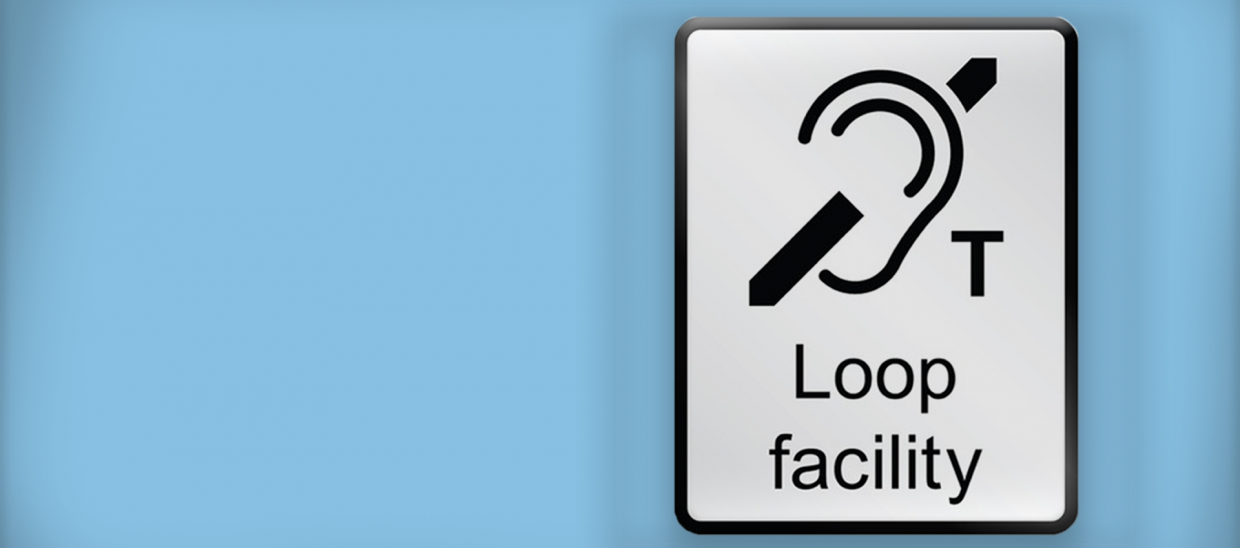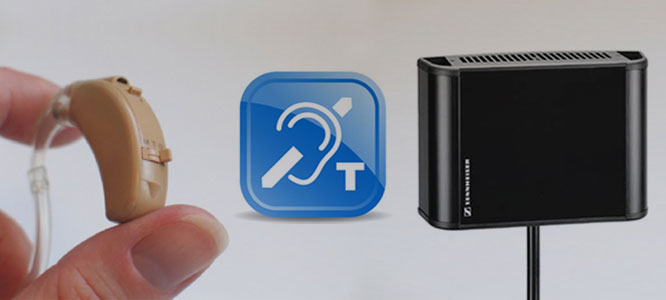Induction loop systems (also known as audio loop systems, hearing loop systems and T- loop systems) can benefit hearing aid users in commercial and domestic environments, making it easier for them to communicate.
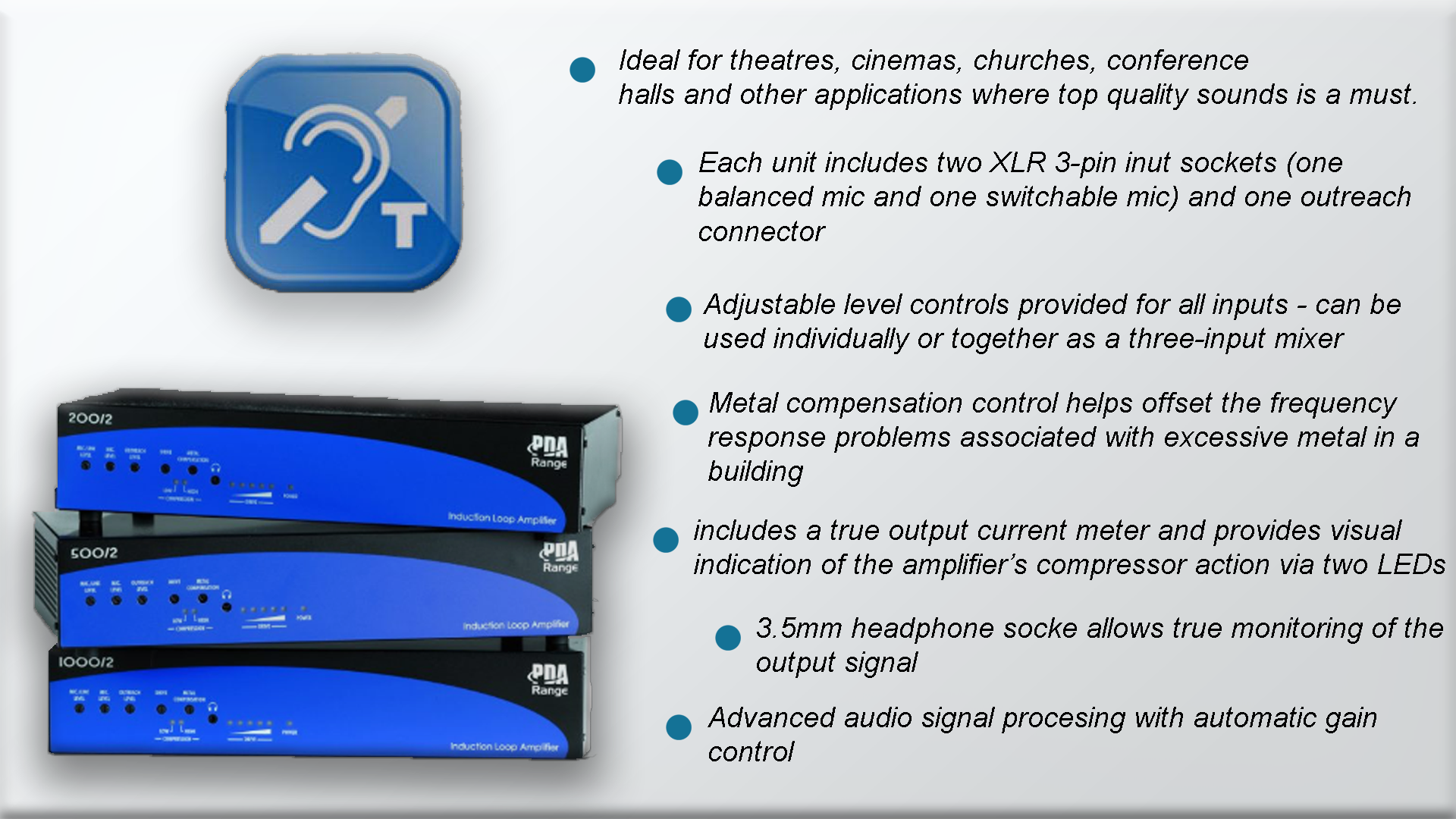
An induction loop system is an audio amplifying system that enables hearing aid users to listen to conversations, performances or the television without the excessive background noise that is produced from the hearing aid’s inbuilt microphone when they increase the volume. The sound source, for example, a microphone on a desk, is plugged into a loop amplifier that feeds a loop cable fixed around the perimeter of the room. The audio signal is transmitted from the loop cable and picked up by the coil housed within the hearing aid. The hearing aid user simply switches their hearing aid to the T position to hear clearly. Please note, only hearing aids with a T switch will pick up the signal from an induction loop system.
There are several ways that induction loops can be set up. Ranging from a desk mounted system to a ceiling-mounted system. Copper wires will travel from the main box unit of the induction loop system and will create a magnetic field that spreads around the room and this is picked up by the copper coil inside hearing aids. This makes listening to conversation 10x easier for those with hearing aids. (Diagram is shown below)
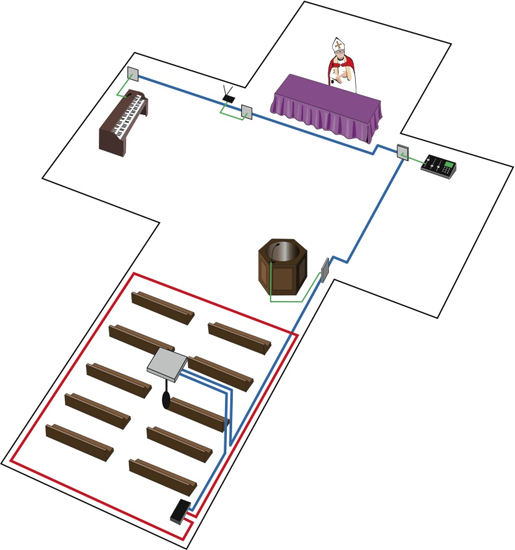
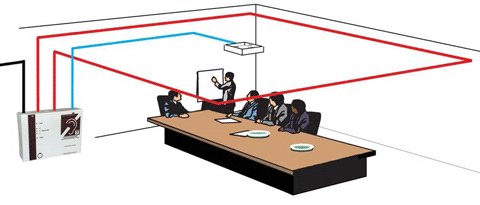
One vision digital has a dedicated AV specialist who is trained and got all the up to date training on induction loop systems. We take pride
in our work and our team here at one vision and are proud of the work we complete. For a professional induction loop installation please contact our office on 01656 744158 or use our contact function at the bottom of this page. 
How does it work?
Most hearing aids have a built-in T-coil, a small wireless receiver, in addition to the regular microphone. When current passes through a wire (the loop cable), a magnetic field is generated around it. If a coil (the telecoil in the hearing aid) is brought within this magnetic field, a corresponding current is created. In technical language, the current is induced in the second wire, hence the term "induction loop". This electro-magnetic principle is the basis for hearing loops and the T-coil technique was invented in the 1950s.
The idea of an assistive listening device
The single most important assistive device for people with hearing loss has been, still is and will be for the foreseeable future the hearing aid. But the hearing aid alone, how digital, high-tech and nice-looking it might be, is not a sufficient tool for better hearing in every place and at every time. Sometimes it’s just not enough. When the hearing aid is insufficient the user gets alienated and cut-off of the social setting. To be unable to take part in the social interaction between people is a dreadful experience and it tends to make people alone and unhappy.
The idea of an assistive listening device is to assist whenever the hearing aid is not sufficient. In many cases, the only way to increase speech intelligibility is to cut the distance between the sound source and the listener and at the same time reduce the present noise. This can basically be achieved with the use of three different techniques – induction (hearing) loop, radio (FM) or infrared (IR) systems.
Everyone wins
An induction loop is clearly the most reliable option for the hearing aid user. We also believe it’s the best solution for the owner of the venue. Although a loop system takes a bit more commitment to get going, it will pay back many times over. A loop system is always active and ready to facilitate anyone with hearing aids as it’s not limited to the number of receivers you have, and minimum maintenance makes it the most cost-effective solution. In public environments where people are just passing through, a loop system is the only practical solution.
Induction loop systems can be used everywhere
In larger venues like stadiums and sports arenas, conference facilities and auditoriums, cinemas and theatres as well as in churches and other places of worship, the induction loop system is an optimal solution. But also for smaller venues like meeting rooms and school classrooms, a loop system can benefit the needs of the hearing impaired in a great way. In trains, trams, and buses a loop system can also work with high performance.
To see more of our work please CLICK HERE

